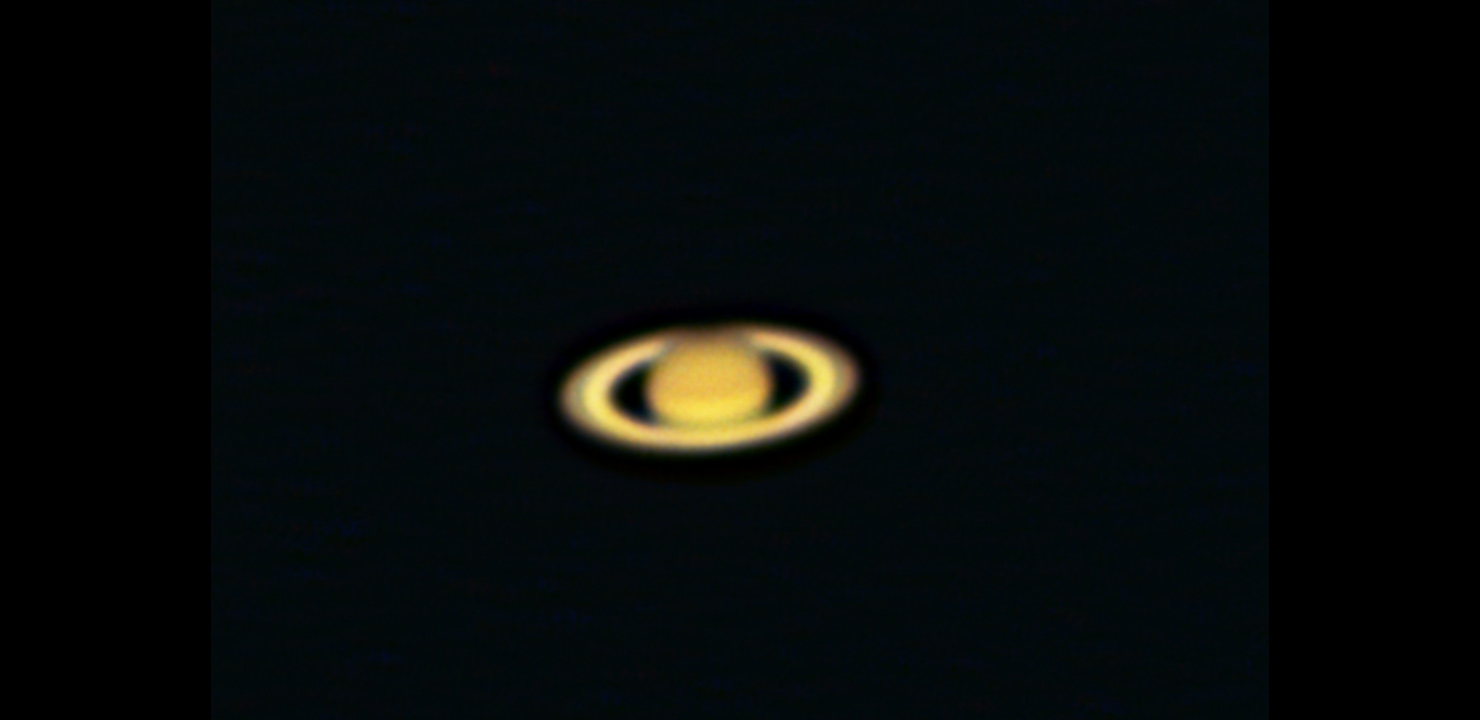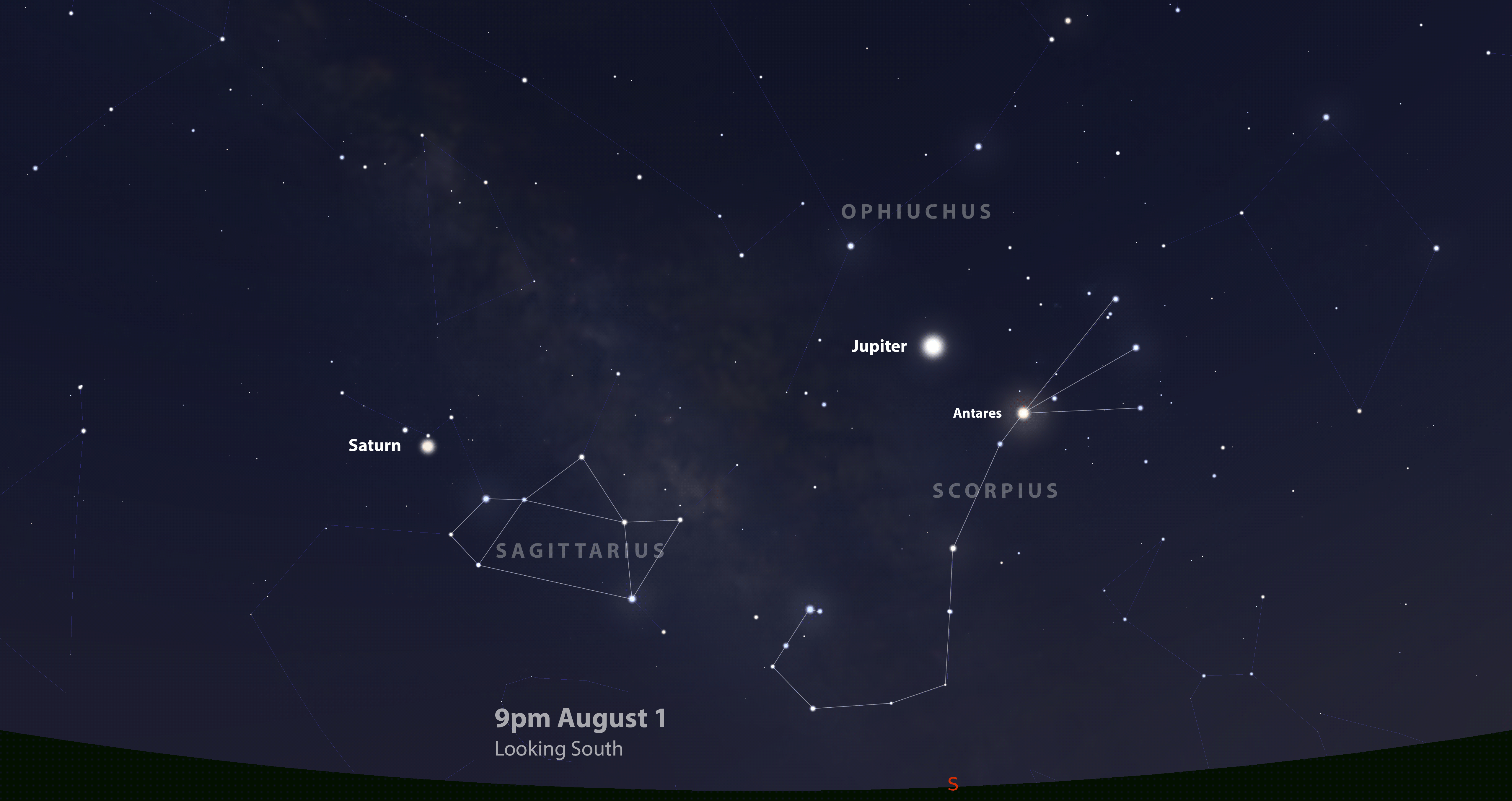
Splendid Saturn
August 2019 :
Note: This article may contain outdated information
This article was published in the August 2019 issue of The Skyscraper and likely contains some information that was pertinent only for that month. It is being provided here for historical reference only.
I hope the weather gods have provided a few clear nights since my Jupiter observing guide appeared last month. I finally observed Jupiter at a late June star party Skyscrapers members conducted for the Jesse Smith Memorial Library in Harrisville on June 28. The four Galilean moons were easily visible in all the telescopes, as were Jupiter’s striking banded cloud tops. Regrettably the Great Red Spot was not visible that night, and my attempts to observe it since my last column have been thwarted for one reason or another. Fortunately, we have several more months to glimpse this perhaps dwindling storm.
I’m sure some of you couldn’t resist an early look at Saturn, even if you had to wait much later in the evening for this beautiful ringed-planet to rise high enough into the sky to clear summer horizon haze. Perhaps sky conditions permitted you to obtain marginal views despite the planet’s low altitude above the horizon within a couple of hours after sunset. Now that another month has passed, Saturn will have risen much higher into the southeast sky, thereby allowing for more favorable views. As promised at the end of July’s column, here is a brief observing guide to Saturn (our solar system’s most stunning planet.)
Simply mention the planet Saturn and immediately any child or adult will visualize a world surrounded by a system of rings. And if it weren’t for Saturn’s rings the disk of the planet could be considered boring, as its clouds are not as prominently colored as those are of Jupiter. With the exception of Titan, Saturn’s largest moon, its other brighter moons are not as bright as Jupiter’s either. The beauty of Saturn lies solely in its rings.
Back on July 9 Saturn was at opposition, rising as the sun set. This event also signaled Saturn’s closest approach to the Earth for 2019—839,641,920 miles. By August 1 this distance has grown to 847,023,600 miles as the Earth pulls out ahead of Saturn in our respective orbits. Regardless of this ever-increasing distance from Earth during the remainder of our Saturn observing season, views of the planet never disappoint the casual stargazer or amateur astronomer.

When August begins, Saturn will be about 20 degrees above the southeast horizon at 9:00 p.m., nestled among the stars to the left of Sagittarius’ “teapot handle” asterism. Saturn will continue to rise higher into the sky along a low arc until it reaches your north/south meridian around 11:00 p.m. At that time Saturn will be only 26 degrees above your southern horizon. For northern hemisphere observers summertime planetary observing is far from ideal because the ecliptic, the apparent path of the Sun and plane of the solar system, traces out a low arc across the sky during summertime nights. And since the planets can never stray from the ecliptic, they also will traverse this low arc.
Regardless, clear and turbulent-free atmospheric conditions can provide spectacular views of the Saturnian system. When you first acquire Saturn with a telescope, its rings will initially take your breath away. They are really an impressive spectacle to behold. The ring system is currently tilted 24 degrees toward the Earth providing us a view of the north face of the ring plane. With the rings still being wide open (they were at their maximum tilt of 27 degrees two years ago), this configuration allows much detail to be seen. You’ll understand what I mean as soon as you gaze at this splendid sight.
It is really amazing that Saturn’s rings are visible at all, considering the planet’s great distance from the Earth and the fact that the main A, B and C rings are only about 32 feet thick. Whereas other portions of the ring system are up to a couple of miles thick. The rings are composed of irregularly shaped dirty snowballs (99 percent water ice with some rocky material), ranging in size from grains of dust to pebbles. There are also some “boulders” as large as 30 feet across. These ring particles all orbit Saturn along the planet’s equatorial plane. Look for gaps within the ring system.
You shouldn't have any difficulty seeing the gap between the primary “A” (outer) and “B” (inner) rings, called the Cassini Division. This region is only 2,175 miles wide. In comparison, the width of the “A” ring is 9,321 miles and the “B” ring is around 16,032 miles across. Saturn’s rings are slowly de-orbiting and all will eventually “rain” down onto his cloud tops in 50 to 100 million years or so and cease to exist. So, you’ve got plenty of time to enjoy the view.
This configuration of the rings provides a stunning 3-D effect of the Saturnian system, and after opposition as our viewing angle changes a keen-eyed observer can look for the shadow of the rings upon Saturn’s cloud tops as well as the shadow of Saturn onto its rings.
And finally, although Saturn has 62 confirmed moons (at last count), they are not as bright as those of Jupiter. One can also detect up to eight of Saturn’s brightest moons in a dark moonless sky with the telescopes available locally. Readily apparent will be Titan, Saturn’s largest moon (and larger than the planet Mercury), followed in order by size and brightness by Rhea, Iapetus, Dione, Tethys, Enceladus, Mimas and Hyperion
While a small two-inch telescope will reveal the beauty of Saturn, search out larger instruments available throughout Rhode Island to explore this exquisite ringed world in splendid detail. Seagrave Memorial Observatory in North Scituate is open every clear Saturday night for observing. Ladd Observatory in Providence is scheduled to reopen Tuesday, July 10, and every clear Tuesday thereafter. The Margaret M. Jacoby Observatory at the CCRI Knight Campus in Warwick is open every clear Wednesday night. Also consider visiting Frosty Drew Observatory in Charlestown on every clear Friday night. Please visit the respective websites for details. These observing sessions are free and open to the public.
Saturn is the true “Lord of the Rings.”
Saturn image by Tom Thibault



